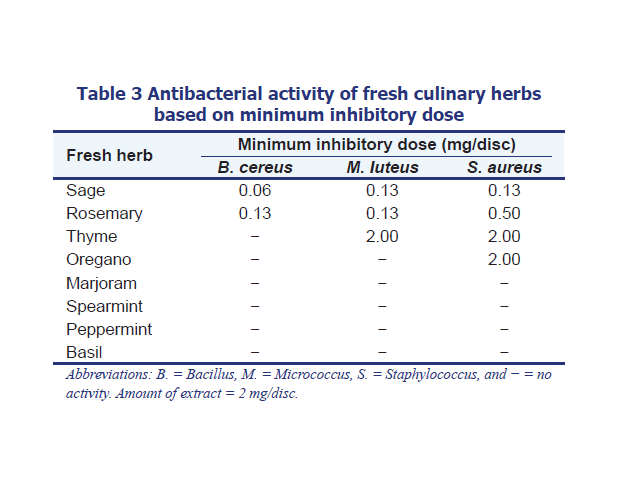Antioxidant and antibacterial properties of some fresh and dried Labiatae herbs
DOI:
https://doi.org/10.5530/ax.2012.3.3Keywords:
Oregano, Marjoram, Rosemary, Sage, Basil, Thyme, Peppermint, SpearmintAbstract
Introduction: Although the antioxidant and antibacterial properties of Labiatae herbs are well known, the effects of different drying methods are yet to be determined. In this study, the antioxidant and antibacterial properties of fresh and oven-dried herbs of oregano, marjoram, rosemary, sage, basil, thyme, peppermint, and spearmint were investigated, in comparison with commercial brands of dried herbs. Methods: Antioxidant properties of total phenolic content, total flavonoid content, caffeoylquinic acid content, free radical scavenging activity, and ferric reducing power were assessed using the Folin-Ciocalteu, aluminium chloride, molybdate, DPPH radical scavenging, and potassium ferricyanide assays, respectively. Antibacterial properties were assessed using the disc-diffusion assay based on minimum inhibitory dose (MID). Bacteria tested were Gram-negative Escherichia coli, Pseudomonas aeruginosa, and Salmonella typhi, and Gram-positive Bacillus cereus, Micrococcus luteus, and Staphylococcus aureus. The three drying treatments were oven drying at 50°C (OD50), oven drying at 80°C (OD80), and oven drying at 50°C with microwave pre-treatment (MOD50). Results: Fresh and commercial rosemary, and oven-dried oregano had the strongest antioxidant properties. Generally, MOD50 herbs had the strongest antioxidant properties followed by OD50 and OD80 herbs. Oven-dried rosemary had lower phenolic content and antioxidant activity than commercial rosemary, while oven-dried oregano, spearmint, thyme, peppermint, and basil had higher values. All herbs showed no antibacterial activity against Gram-negative E. coli, P. aeruginosa, and S. typhi. Rosemary, sage, peppermint, and spearmint inhibited the growth of Gram-positive B. cereus, M. luteus, and S. aureus. Compared to green and black teas of Camellia sinensis, rosemary and sage have stronger antibacterial properties. Conclusion: Labiatae herbs can have enhanced antioxidant and antibacterial effects when used in combination. Further research is needed to study the synergistic behaviour of these herbs.
Downloads
Metrics





